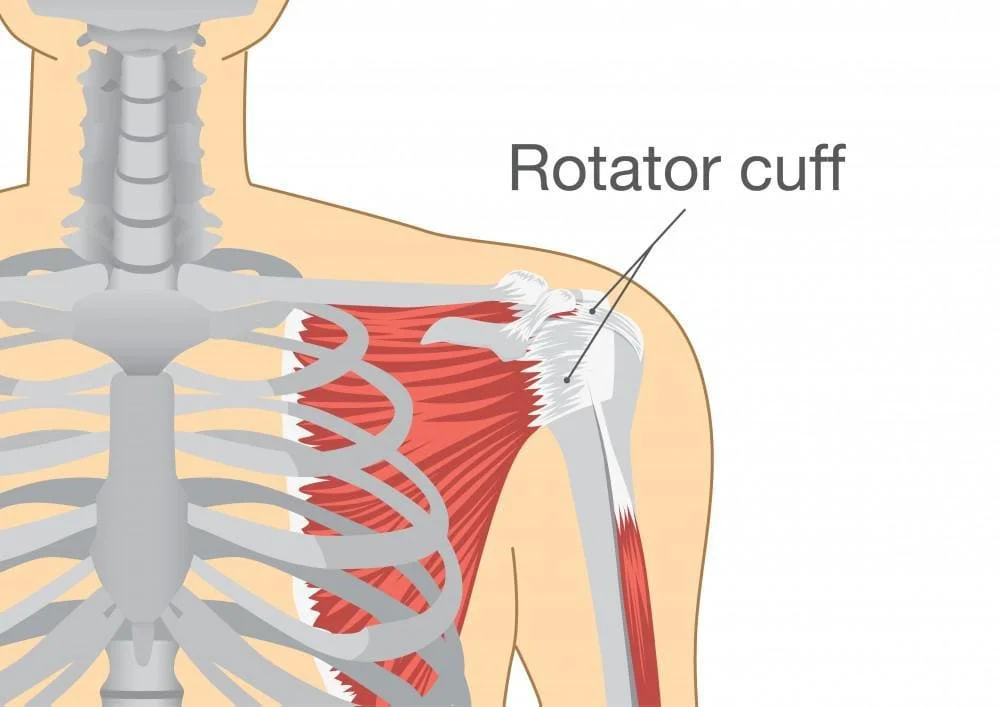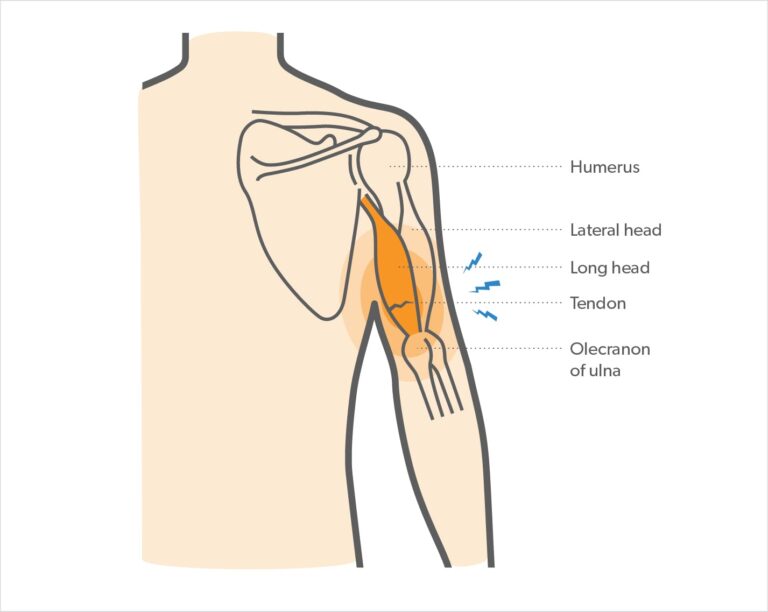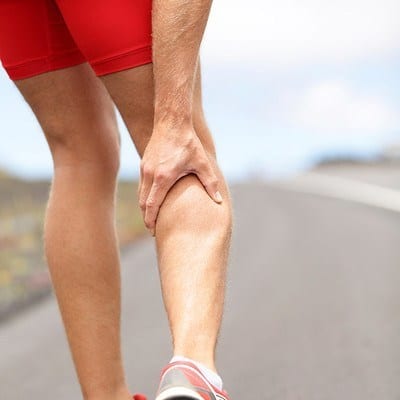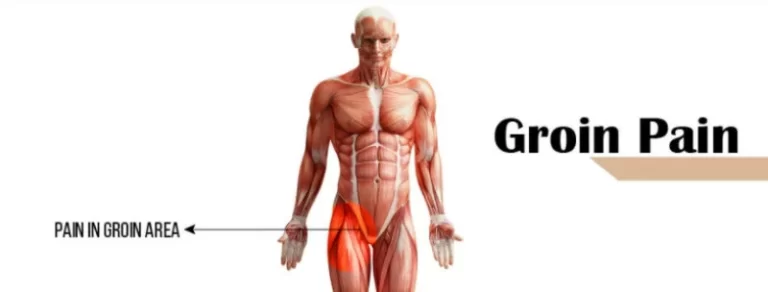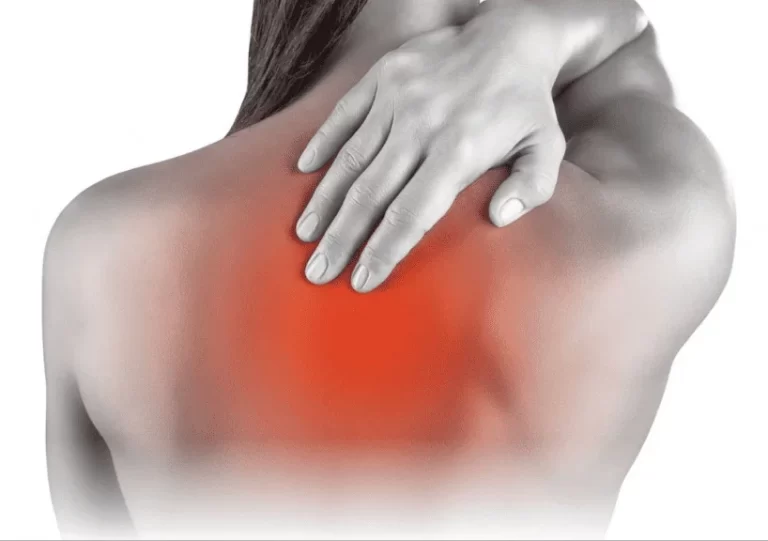Rotator cuff muscle pain: Cause, Symptoms, Diagnosis, Treatment, Exercises
When you feel a Sharp & aching pain over the front or outside means the lateral part of the shoulder joint & upper arm, you may have Rotator cuff pain. you also feel the loss of strength in the arm.
Table of Contents
What is rotator cuff muscle pain?
- The rotator cuff muscle consists of four muscles that surround the shoulder blade.
- When any muscle tendon is injured, inflamed & worn down, it is produce rotator cuff muscle pain.
- You are seeing the swellings & spasms in the area of pain.
- This pain is reduced by the RICE principle & physiotherapy treatment.
What is the anatomy of the rotator cuff muscle pain?

- The rotator cuff is made up of the muscles & tendons which are located in the ball means the head of the upper-arm bone = is the humerus In the shoulder joint socket.
- This rotator cuff muscle helps you raise & rotate the arm.
The rotator cuff muscle includes 4 muscles:
- Supraspinatus muscle = This muscle holds the humerus bone in place & keeps the upper arm stable & helps to lift the arm.
- Infraspinatus muscle This muscle is the main muscle that is led to rotate & extend the shoulder joint.
- Teres Minor muscle = This muscle is the smallest rotator cuff muscle, the main job of this muscle is to assist with the rotation of the arm away from the body.
- Subscapularis muscle= This muscle holds to upper arm bone to the shoulder blade & helps to rotate the arm, hold the arm straight out & lower to arm.
What is the cause of the rotator cuff muscle pain?
- Rotator Cuff Tendinitis:
- This Rotator cuff tendinitis is most common in young athletes & middle-aged adults.
- This tendinitis occurs when the normal & healthy rotator cuff tendon becomes injured & inflamed.
- Some Sports & activities that require a lot of throwing & overhead arm motion which is become to cause tendinitis like as swimming, tennis, volleyball, baseball & weightlifting.
- Certain chronic diseases are also associated with rotator cuff tendinitis such as diabetes & obesity which are risk factors for muscle pain.
- Rotator Cuff Tear:
- A rotator cuff tear occurs when the muscle tendon is torn from the arm bone.
- This Rotator Cuff tear is found mainly in middle-aged & older adults.
- This Rotator Cuff tear is caused by trauma like a fall directly on the shoulder joint & direct blow to the shoulder. when they do the Chronic overuse of the rotator cuff muscles which is also contributing to this muscle tear.
- Obesity & smoking also increase a person’s chance of tearing the Rotator Cuff
- Rotator Cuff Tendinosis:
- Rotator cuff tendinosis which is a condition in the tendons starts to weaken & thin out due to ageing.
- In this Tendinosis decreases in blood supply to the rotator cuff tendons.
- when the tendons become too stressed & injured, it is not recovered & heal as well.
- Poor posture, repetitive overhead activity, smoking & genes also play a role in the development of the rotator cuff tendinosis.
- Rotator cuff pain is also due to playing sports that involve throwing & overhead reaching, like baseball & swimming.
- Other causes of muscle pain include ageing & weakening of the tendons or injuries of the shoulder.
What are the symptoms of the Rotator Cuff muscle injury?
- You feel Sharp & aching pain in the area of pain.
- Swelling is also present located over the front or outside means the lateral part of the shoulder joint & upper arm.
- In some cases, you feel the pain farther down the arm.
- You feel the difficulty performing activities like combing the hair & reaching behind the back.
- Loss of strength in the arm means you tend to have a hard time putting dishes away in the upper cabinets & reaching into the refrigerator to lift a carton of milk.
- You also feel Pain in sleeping on the affected shoulder joint.
- The feeling of Throbbing pain at night is also common with rotator cuff tendinitis & tear.
- You feel the Swelling, redness, bruising & warmth around the shoulder joint.
- Shoulder pain is along with trouble breathing, dizziness & abdominal pain.
- You feel the Difficulty in lifting the arm above the head & carrying objects.
What is the Diagnosis of Rotator Cuff muscle pain?
- The doctor is taken down to medical history
- Then perform a physical exam
- The doctor also examined the range of motion & strength of the upper limb in the examination part of the assessment.
- The doctor does the Imaging scans, such as an X-ray or an arthrogram = which is a type of detailed X-ray that helps to identify any bone spurs.
- These small bone growths are rubbed against the rotator cuff tendon which produces pain &inflammation.
- MRI & ultrasound scans are also used in the diagnosis.
- These tools examine the soft tissues, including the tendons & muscles.
- These tools help to identify tears & show how large & severe the tears have become.
Test for the diagnosis of the Rotator Cuff muscle injury:
When you feel a rotator cuff problem, the healthcare provider is advised to perform some tests to evaluate the rotator cuff tendons injury.
Empty Can Test:
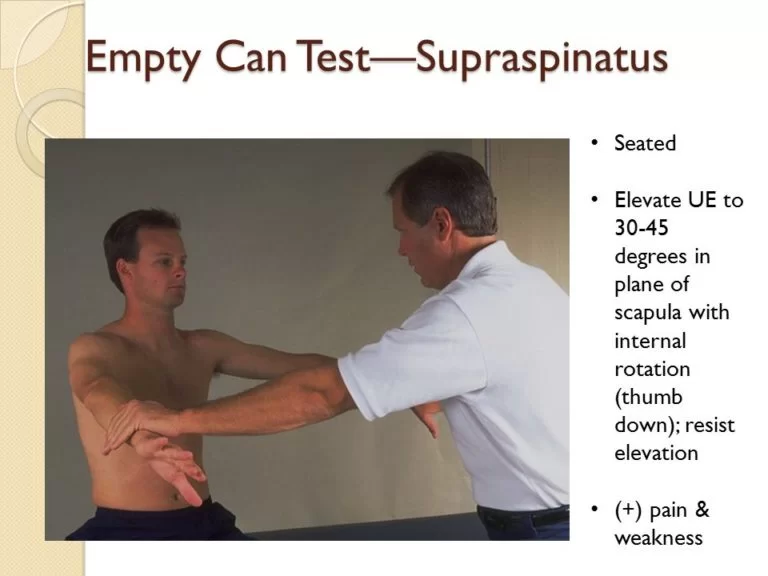
- This empty can test helps you check the supraspinatus, a muscle that is located on the upper part of the shoulder.
- This test is a simple test to perform.
- You are Sit or stand comfortably.
- Lift the painful arm out to the side so the arm is parallel to the floor.
- Bring the arm forward to about 30 to 45 degrees.
- Turn the hand over so that the thumb is pointing toward the floor.
- Have the other person which is applied gently push the arm down.
- When the produce pain & weakness prevent you from keeping the arm in the “empty can” position, it is indicated to supraspinatus rotator cuff injury.
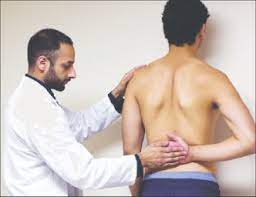
Lift-Off Test:
- This lift-off test is a shoulder test that helps to determine the tear in the subscapularis muscle.
- This test is responsible for rotating the shoulder inward.
- You are Standing up & placing the back of the hand on the small of the back.
- Face the palm away from the back.
- Then Attempt to lift the hand away from the body.
- If you are unable to lift the hand away from the low back, it is indicated to be a subscapularis rotator cuff injury.
Resistance Testing:
- This test also helps to determine the rotator cuff tear which also causes the shoulder pain to perform the manual strength testing of the rotator cuff muscles.
- You are sitting comfortably in a chair.
- Bend the elbow joint at 90 degrees & keep the elbow joint tucked into the side.
- Have someone push the hand in toward the belly.
- When you are unable to hold this position & produce pain, it is indicated as a rotator cuff tear.
Pain-Relief Test:
- This test is commonly performed by orthopedic surgeons & sports medicine specialists.
- It helps to distinguish between pain that is caused by a rotator cuff tear & pain caused by tendonitis.
- The doctor injects lidocaine, which is an anesthetic drug that does numb the area, into the shoulder joint.
- When you are suffering from rotator cuff tendinitis, lidocaine relieves the pain & muscle strength remains normal.
- Because of this test, the pain will be relieved, but the muscle becomes too weak.
- When the doctor finds to large tear, the primary healthcare provider is referred to you the orthopedic surgeon.
- Sometimes large tears of muscle are needed for surgery & repair.
Differential Diagnoses of the rotator cuff muscle pain?
- Not all rotator cuff muscle pain occurs from the injury area.
- Doctors often want to rule out other possible causes for a person’s symptoms to help them make the right diagnosis so they need to differential diagnosis for rotator cuff injury.
- Some other musculoskeletal conditions that also affect the muscles & bones which is also produce similar symptoms of rotator cuff muscle injury include:
- Frozen shoulder
- Osteoarthritis
- Shoulder instability & dislocation
- Labral tear
- Biceps tendonitis
- This Differential Diagnosis occurs with the imaging tests.
- An X-ray shows signs of osteoarthritis.
- An MRI is used to diagnose the labral tear.
What are the Risk Factors for rotator cuff muscle pain?
The following factors increase the risk of rotator cuff muscle injury which leads to rotator cuff muscle pain :
- Age:
- When you are older, risk of the rotator cuff injury increases.
- So that Rotator cuff muscle tears are most common in people who are older than 60.
- Construction jobs :
- Some Occupations like carpentry & house painting which requires repetitive arm motions in the work that applies to overhead on the muscle which leads to damage to the rotator cuff muscle.
- Family history :
- Some genetic component is also involved with rotator cuff injuries which appear to occur more commonly in certain families.
What are the complications of the rotator cuff injury?
- The most common complication is that occurs to re-tearing of the rotator cuff muscle after healing.
- When does the surgical repair for the injury that may occur to the risk of postoperative complications?
- The General surgical risks include blood loss & issues with the anesthesia.
- Some other complications include to :
- Permanent stiffness
- Frozen shoulder
- Reduced cuff strength
- Loss of motion
What is the treatment for the rotator cuff muscle pain?
RICE principle :
In the starting phase of pain reduction, muscle pain & swelling are applied to the RICE principle.
- R – rest = When you feel the pain must avoid activities that aggravate the pain, like overhead reaching & reaching behind the back means doing the rest in some way.
- I – ice = Applying ice on the area of pain for 20 minutes which is used to reduce pain & swelling, you can also apply an ice pack & frozen peas to the area of pain.
- C- compression = Applied to compression bandage on the area of muscle pain for release to swelling by compression but not used to slings because it is the risk for a frozen shoulder.
- E- elevation = Elevate to affected arm for release to swellings with the help of a pillow.
Pain medication:
- You are taken to the over-the-counter drug for release to the area of pain.
- In the over-the-counter drug, you are taken to the nonsteroidal anti-inflammatory drug (NSAID) like Advil (ibuprofen) drug.
- You are also applied volini gel & diofance gel on the area of muscle pain for pain release.
Heat therapy:
- You are also applied heat therapy to the area of muscle pain release to swellings & muscle pain.
- You are applied to a hot pack or heating pad on the area of pain for 10 minutes & 3 times per day.
Surgery:
- Sometimes surgery is necessary for this muscle pain.
- When this injury occurs Young athletes often need surgery.
- Rotator cuff muscle repair surgery is done as an open procedure & a minimally invasive arthroscopic one.
- The surgeon is advised on which is the approach best for you.
- This depends on the exact location of the rotator cuff damage & how severe to injury is.
What is Physiotherapy treatment for rotator cuff muscle pain?
- The physiotherapy treatment includes massage, electrotherapy, stretching & exercise, and strengthening exercises which help you release pain & swelling.
Massage:
- Massage helps you release trigger points & tenderness of muscle pain.
- It is also decreased muscle pain & swelling.
- Massage is applied by a physiotherapist to the trigger points of the muscle for 5 to 10 minutes.
- It is applied with the help of oil.
- The therapist is also used to massage machine release to spasms of muscle.
Electrotherapy:
- The electrotherapy includes SWD, TENS, IFT, US, and Deep heating therapy which is used to release the pain & swellings as well as spasms.
- For release to tender points & swellings, the therapist advises to US = an ultrasound machine for 5 minutes with volini gel.
- For release to pain as well as swellings physiotherapist advice to SWD = short wave diathermy, IFT = Inferential therapy & TENS = trans-cutaneous electrical nerve stimulation for 10 minutes.
- So that electrotherapy treatment is required release to muscle pain.
Stretching:
- Doorway stretch
- Crossover arm stretch
- Two arm wall stretch
- Sleeper Stretch
- Over-your-head stretch
- Up-the-back stretch
Stretching helps you release the tightness in the muscle.
Doorway stretch:
- For Warm-up, the muscles do the stretching.
- For this stretching is patient is in a standing position near to open doorway & spreading the arms out to the side.
- Then Grip the sides of the doorway with each hand & below shoulder joint height & lean forward through the doorway till the patient feel a light stretch.
- Must be Keep a straight back as the lean & shift the weight onto the toes.
- The patient feels a stretch in the front of the shoulder joint but Does not the overstretch of the muscle.
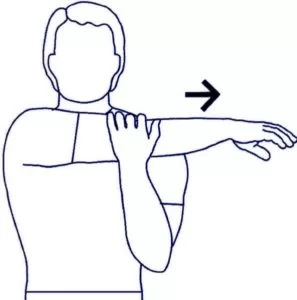
Crossover arm stretch:
- Then Lift the one arm so that it is perpendicular to the floor & extend it straight without locking it.
- Take to wrist joint of the extended & lifted the arm with the opposite hand.
- Gently pull the arm across the front of the body, trying to hug the chest with the arm.
- Hold this stretch for 5 seconds before slowly releasing it.
- Repeat this stretching on the other side.
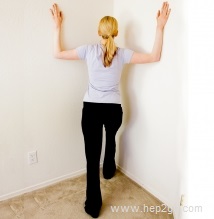
Two arm wall stretch:
- The patient is Stand up straight with the back against a wall.
- Raise each arm sideways into an L-shape with the upper arms parallel to the floor,
- And keep the arms as flat as against the wall as possible.
- Maintain the elbow joint bend, move the arms up the wall which brings the hands closer together & then move the arms back down.
- Then return to a resting position.
Sleeper Stretch:
- The patient is lying on the side on a firm or flat surface with the affected shoulder under the arm bent.
- The patient also places the head on a pillow for comfort, if needed.
- Use the unaffected arm to push the other arm down.
- Stop pressing down when the patient feels a stretch in the back of the affected shoulder.
- Hold this stretching position for 30 seconds, then relax the arm for 30 seconds.
- Repeat this stretching 3 times in 1 session.
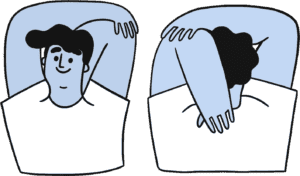
Over-your-head stretch:
- The patient is Lie flat on the floor & bed, arms are straight at the sides.
- Hold the cane or rod with both hands near the hip joint.
- Keeping the arms straight then slowly bring the cane or rod up in an arc-like trajectory.
- Continue the motion till the cane/rod goes over the face & touches down above the head.
- Return to the starting position.
- Repeat this exercise 3 times in 1 session.
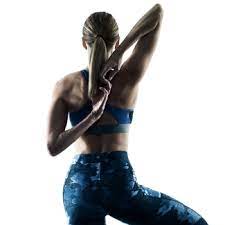
Up-the-back stretch:
- Start this exercise in a standing position & with arms at the side.
- Hold the cane against the body behind you.
- Then Slowly slide the cane or rod up to the back, bending the elbow joint as it travels up.
- Go to as high as feels too comfortable.
- Then Return to the starting position.
- Repeat this stretching 3 times in a session.
Exercise:
Exercise helps you release pain & also decrease weakness of the muscle.
Side-lying external rotation:

- The patient is Lying down on the side opposite the affected arm.
- Bend the elbow joint of the injured arm at 90 degrees & rest the elbow on the side.
- The patient forearm is resting across the abdomen.
- Then Hold a light dumbbell in the injured side’s hand & keeping the elbow joint against the side, then slowly raise the dumbbell toward the ceiling.
- Stop rotating the arm when you feel the strain.
- Hold the dumbbell up for too few seconds before returning to the start position with the arm down.
- Repeat this exercise for 3 sets of 10 up to 3 times per day.
Arm reach:
- The patient is lying flat on the back.
- Then extend the arms & legs & engage the abdominal muscles.
- One arm Reach is toward the ceiling & lifting the arm till the shoulder blade comes off the floor.
- Hold this exercise for 5 seconds.
- Then Return to arm to the floor.
- Repeat this exercise on the other side.

Pendulum:
- The patient is Lean forward with the one arm hanging freely.
- Then use the other arm to brace against a chair for support.
- Gently swing the hanging arm from side to side, forward & back or in a circular motion.
- Then slowly return to a standing position.
- Repeat this exercise on the other side.
Lawnmower:
- Place the one foot slightly forward then the feet are shoulder-width apart & hold a lightweight in the one hand.
- Then Keep the hand, not holding the weight on the hip & lean slightly forward & bend at the knee joint so that the weight is parallel to the opposite side knee joint.
- Like starting a lawnmower, pull the elbow joint of the arm with the weight back across the body.
- Return slowly to the starting position.
- Repeat by working up to 2–3 sets of the 8–10 repetitions.
- Then Repeat this exercise on the other side.
Scapula Setting:
- The patient is lying on the stomach with the arms by the sides.
- Then Place a pillow under the forehead for comfort.
- Gently draw the shoulder blades together & down the back as far as possible.
- For Ease of this exercise about halfway off from this position & hold this exercise position for 10 seconds.
- Relax & repeat this exercise 10 times.
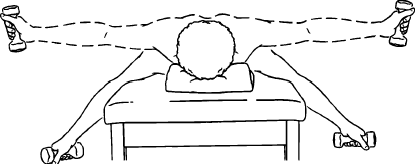
Bent-Over Horizontal Abduction:
- The patient is lying on their stomach on a table & bed with the injured arm hanging over the side.
- Keep the arm straight & slowly raise it to eye level.
- Then Slowly lower to exercise back to the starting position.
- Repeat this exercise 10 times in 1 session.
Arm raise:
- The patient is in a standing position.
- Stretch out the arms & bring the hands together & create a V shape.
- Keep the thumbs pointed up.
- Slowly raise the arms to the ceiling & maintain the V shape.
- Then Return to the starting position.
- Repeat this exercise 10 times in 1 session.
Wing flap:
- The patient is lying on the side, with the uninjured shoulder joint down & injured shoulder up.
- The injured arm is resting on the body, with the elbow joint bent at 90 degrees.
- Rotate the arm up toward the ceiling, keeping the elbow joint bent.
- Return to the starting position.
- Repeat this exercise 10 times in 1 session.
Strengthening exercise:
strengthening exercise is helpful to you for strengthening the muscle so that decrease to the weakness of the muscle.
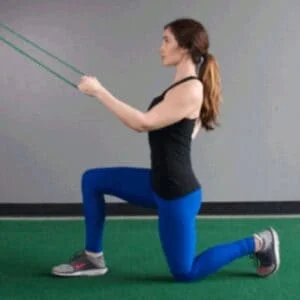
High-to-low rows:
- First Attach a resistance band for something sturdy at & above shoulder height.
- Be sure it is secure so that it does not come to loss when you pull on the resistance band.
- Get down to one knee so the knee is opposite to the affected arm is raised.
- Rest the other hand on the raised knee.
- Holding the band securely with the arm outstretched & pull the elbow joint toward the body.
- Keep the back straight & squeeze the shoulder blades together & down as the pull.
- Must sure body should not move & twist with the arm.
- Return to starting position & repeat to 3 sets of 10.
Reverse fly:
- The patient is Stand with the feet shoulder-width apart & knees are slightly bent.
- Keep the back straight & bend forward slightly at the waist.
- With a hold to lightweight in each hand, extend the arms & raise the hand away from the body.
- Do not lock the elbow joint.
- Squeeze the shoulder blades together as you do.
- But Do not raise the arms above shoulder height.
- Then Return to starting position & repeat this exercise in 3 sets of 10 repetitions.
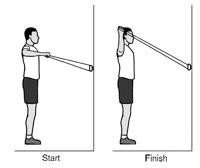
External Rotation With Arm Abducted 90°:
- First Make to 3-foot-long loop with the elastic band & tie the ends together.
- Which is Attaching the loop to a doorknob & another stable object.
- The patient is standing to hold the band with the elbow bent at 90° & raised to shoulder height this position is known as the starting position.
- Keep the shoulder & elbow joint at level then slowly raise the hand till line with the head.
- Then Slowly return to the starting position & repeat this exercise 10 times.
What is the Prevention of rotator cuff muscle pain?
- Always do the Warming up before the exercise.
- You are Learning how to lift weights properly means using the legs & maintaining a straight back.
- Doing the stretching & strengthening shoulder exercises for the pain.
- Avoid smoking.
- Always try to have good posture.
- Maintain to healthy body weight.

